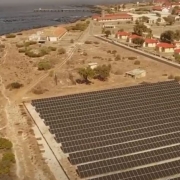Bankability shifts focus in emerging markets
As emerging market banks gradually grow used to solar, the bankability issue for developers is increasingly around off-takers and currency, not projects.
The growing popularity of solar investments means bankability issues for emerging market PV developers are increasingly revolving around the quality of off-takers rather than projects.
Ragnar Gerig, director of energy for Africa and Asia at Deutsche Investitions- und Entwicklungsgesellschaft (DEG), the German Investment and Development Corporation said:
In regions such as West Africa, for example, “there are a lot of off-takers without a credit standing. We see the environments solar is going into are more and more challenging,” he said. Getting funding for projects is still difficult in many emerging markets, he noted, although he said: “Solar is now, for any country, the easiest energy to invest in. The prices for solar have come down in the last 10 years by nearly 90%. Equipment is quite competitive.”
Getting funding for projects is still difficult in many emerging markets, he noted, although he said:
“Solar is now, for any country, the easiest energy to invest in. The prices for solar have come down in the last 10 years by nearly 90%. Equipment is quite competitive.”
A further complication in emerging market risk assessments is that in many countries, including relativity major markets such as South Africa, power-purchase agreements tend to be in local currencies, which can expose project owners to currency fluctuation risks.
These considerations are beginning to emerge at the same time as there is growing acceptance of solar by local lenders in many emerging markets, as well as increasing awareness of ways in which developers can make project more attractive to funders.
This is succeeding in attracting significant new investment to the market. In fact, “solar power is the leading sector for money committed during 2014,” revealed the 2015 edition of the Renewables Global Status Report from REN21, “receiving more than 55% (USD 149.6 billion) of total new investment in renewable power and fuels.”
The popularity of solar is being buoyed by initiatives such as a programme by the International Renewable Energy Agency (IRENA) to work with local financial institutions in Africa and India on improving the investment climate for PV.
Henning Wuester, IRENA’s director of knowledge, policy and finance, said:
“In addition to strengthening due diligence and project preparation, developers can reduce perceived risks by working with public finance institutions through on-lending or co-lending schemes. In addition to strengthening due diligence and project preparation, developers can reduce perceived risks by working with public finance institutions through on-lending or co-lending schemes.”
Another risk-reduction measure developers can take is employing tried-and-tested technology rather than chancing new, unproven developments.
If the technology has credible certifications for reliability, this helps strengthen the business case, said Mark Barineaux, a solar analyst at Lux Research.
Finally, an increasingly popular way of raising cash without potential headaches and red tape is to establish a yieldco. The flotation of TerraForm Power on NASDAQ brought parent company SunEdison USD$533 million in net proceeds, for example.
This kind of money can be put to use developing projects in areas where local banks may fear to tread, and may well become a key part of the future of funding renewable projects in evolving markets.
In any case, the idea that solar is perceived as unproven, untried and therefore risky outside of more mature markets is rapidly becoming outmoded, said SunEdison founder Jigar Shah, who is now president of Generate Capital.
Instead, when considering investment in any type of project in some emerging markets, Shah said:
“Anything past five years is risky because of currency risk and political risk. So 20-year investments are the problem, not solar per se.”
Find out more about how to unlock emerging market funding at Unlocking Solar Capital Africa, on November 1-2 in Nairobi. Secure your seat today.
Source: News article by Mike Stone & Jason Deign for Solarplaza. Image credit: Richard Walker via Flickr (CC BY 2.0).











